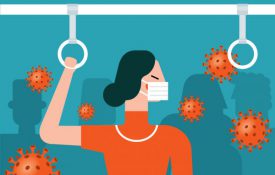-
A Case for the Distractible Toddler: Psychologists Suggest Parents Should Wait to Teach Toddlers Self-Control
Toddlers are distractible. Their minds flit constantly here and there, and they have a terrible time concentrating on even the most stimulating project. They might be fascinated by a colorful new toy, but only until the next best toy comes along. This can be maddening for parents or teachers, who often try to rein in a toddler’s impulsivity. But should we really be trying to teach self-control? Psychologists are beginning to raise these questions, and some are even suggesting that it may be detrimental to the developing brain to push it toward maturity too soon.
-
The Straight Dope: Studies Suggest Parental Monitoring Can Help Decrease Adolescent Marijuana Use
Marijuana is the most widely used illicit drug by adolescents, with almost 42% of high school seniors admitting to having experimented with it. Continued marijuana use may result in a number of serious consequences including depression, cognitive impairment, cardiovascular disease, and certain forms of cancer. As such, it is critical to prevent marijuana use by adolescents and numerous behavioral and medical scientists have been trying to establish the best means of prevention. Many studies have focused on parents as being the best avenue for preventing adolescent marijuana use.
-
Parents Just Don’t Understand: The Role of Parental Control in Western and East Asian Countries
Many parents like to meddle in their children’s lives. Sometimes this can be beneficial, if the meddling is in the form of parental guidance or setting rules. However, numerous studies have found that in Western countries, when parents are very controlling and dominating over their children, the children suffer psychologically. It has also been suggested that this effect may not be as strong in East Asian countries — researchers have posited that certain aspects of East Asian culture may make children more accepting of their parents’ intrusive behavior.
-
A Vast Right Arm Conspiracy? Study Suggests Handedness May Effect Body Perception
There are areas in the brain devoted to our arms, legs, and various parts of our bodies. The way these areas are distributed throughout the brain are known as “body maps” and there are some significant differences in these maps between left- and right-handed people. For example, in left-handed people, there is an equal amount of brain area devoted to the left and right arms in both hemispheres. However, for right-handed people, there is more cortical area associated with right arm than the left. Psychologists Sally A. Linkenauger, Jonathan Z. Bakdash, and Dennis R. Proffitt of the University of Virginia, along with Jessica K. Witt from Purdue University, and Jeanine K.
-

Sneezing in Times of a Flu Pandemic: Exposure to Public Sneezing Increases Fears of Unrelated Risks
The swine flu (H1N1) pandemic has received extensive media coverage this year. The World Health Organization, in addition to providing frequent updates about cases of infection and death tolls, recommends hyper vigilance in daily hygiene
-
Angry Faces: Research Suggests Link Between Facial Structure and Aggression
Angry words and gestures are not the only way to get a sense of how temperamental a person is. According to new findings in Psychological Science, a journal of the Association for Psychological Science, a quick glance at someone’s facial structure may be enough for us to predict their tendency towards aggression. Facial width-to-height ratio (WHR) is determined by measuring the distance between the right and left cheeks and the distance from the upper lip to the mid-brow. During childhood, boys and girls have similar facial structures, but during puberty, males develop a greater WHR than females.

